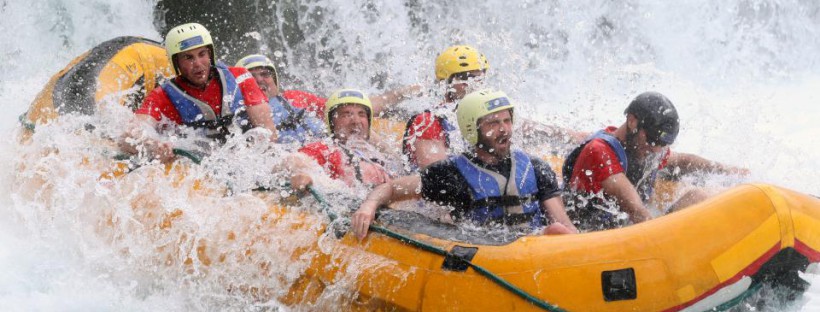As elsewhere in Dalmatia, Zadar and parts of the surrounding area have run different degrees of successful tourist businesses for decades, leaning exclusively on the area’s main resources: the sea, long coast with its many islands and large number of warm, sunny days.
Guests from all over Europe swarmed to our coast in pursuit of idyllic Mediterranean and Dalmatian sceneries, exploring small town streets and spending long hours on the beach while enjoying everything local gastronomy has to offer. This is how Croatian mass tourism was created – where seaside holiday means spending a week, ten days or a fortnight just lying around, doing nothing at all. However, things have started to shift in another direction in the past 10 years. Tourists were first to realise that there was more to Zadar County that the sea, beaches and islands – that it actually possessed a fascinating and diverse land potential. Just a few kilometres further rises the great Velebit mountain range intersected with rivers flowing through attractive canyons and forming the impressive Vransko Lake. New generations of tourists attracted to healthy lifestyle and active holiday discovered the beauty and geographical diversity of this area.
It did not take long for local entrepreneurs to realise the potential lying there. One of these was Đuro Župan, a well-known commander of the 1st Zadar Special Police Unit during Croatia’s War of Independence and later also President Tuđman’s Chief of Security. When the war ended, Župan had to reinvent himself as a civilian so, being born in Kruševo, he decided to invest into something closest to home: the Zrmanja River.
Kolinda also descended down the River Zrmanja
This was the beginning of the Riva Rafting Centre, which has since grown into the main tourist company in the Obrovac area, mainly organising adventure tours: rafting on the Zrmanja, kayaking safari, summer and easier rafting tours, paddle boarding, hiking tours in the Krupa or Paklenica Canyons, tours of Cerovac Caves, Jeep photo safari, and a range of other different programmes that guests can adapt to their liking and where they will be supported by trained skippers, guides and animators. The Riva Rafting Centre organises boat excursions; however, not on the sea, but on the Zrmanja River, combining the canyon tour in the navigable part of the river with the Novigrad Sea cruise.
Mr. Župan and his team also organise gastronomic adventures for recreational athletes and adventurers on his own stone Mićanovi Dvori Estate in Kruševo. Zrmanja Ecovillage, featuring several houses for rent and a vast pool, is also close by. Each spring since 2006, Župan’s company has organised the Zrmanja Rafting regatta, the only one of its kind in Croatia. The event got great publicity already in the first year as it was visited by a delegation of the former Government, when even our current President Kolinda Grabar-Kitarović descended down the river. The regatta has since become the most important tourist event of the year in the Obrovac area.
400 routes for rock climbing in the Paklenica Canyon
Thousands of guests book Riva Rafting Centre’s programmes each year and the season on Zrmanja lasts practically the whole year round, with a break just during the several of the coldest winter months. What Župan, who has had guests from literally all European countries, finds to be the most satisfying is the fact that some of them associate the Zadar region primarily with rafting, the Zrmanja and Mount Velebit. On the other hand, on Mount Velebit, in addition to Župan’s business endeavours, a different kind of adventure tourism section has started developing – hiking and rock climbing in the Paklenica National Park.
Rock climbing history dates back to 1938. However, it was in the 50s and 60s that mostly Croatian rock climbers started intensively climbing in the Canyon and that is when many now classical routes on the Anića Kuk – Mosoraški, Velebitaški and Klin routes being the most famous ones – were climbed for the first time. The 70s marked a new phase of Paklenica rock climbing when climbers from Slovenia dominated the canyon, and they were also the first to climb some of the most difficult technical routes in Paklenica at the end of 1980s.
Sports climbing has been gaining popularity in the past two decades, so the majority of new routes are short sports ones. Nevertheless, a series of beautiful long routes equipped with necessary gear stretch along almost all Paklenica’s rocks. In total, there are around 400 equipped limestone rock routes in Paklenica. There are all sorts of different grades and lengths of routes, so all climbers can find something to their liking.
Winnetou tourism
Apart of these atypical tourist offers, the vast Zadar hinterland offers its guests, that is, attracts them, with other attractions as well, such as the firmly established “Winnetou tourism”. Each year, Mount Velebit, Paklenica Canyon, the Zrmanja River and around the Town of Benkovac area attract thousands of fans of films centred around this German Indian as these were locations where the scenes were filmed.
However, Ravni Kotari has been developing another special type of tourism, based on restoring old or rebuilding small manors providing guests with maximum comfort and complete peace and quiet. Even though only a dozen of such manors have been built so far, their season also does not end after two peak summer months – they are booked for up to 20 weeks a year. Benkovac local government supports the construction of these atypical and highly sought-after luxurious estates.
A special type of wining and dining offer has developed in this area as well: excursions from Zadar and the surrounding tourist towns to wine cellars and taverns in, for example, Nadin, the Stankovci area and Polača, are organised for guests who love good food and wine. This whole story is still in its beginnings; wine roads in this area have not become a reality in the degree they have in Istria, but this is definitely the direction of future Zadar hinterland’s tourism.




